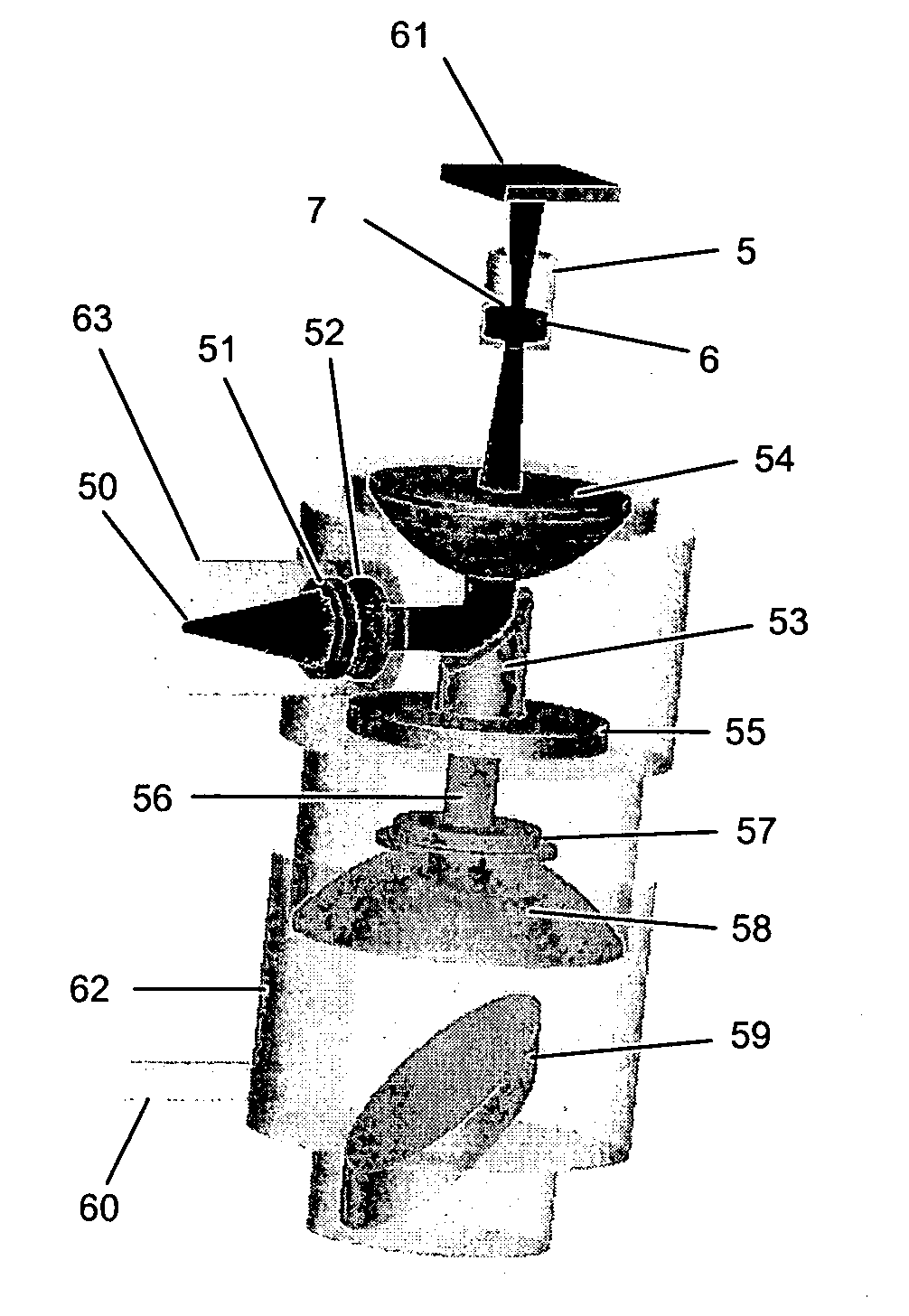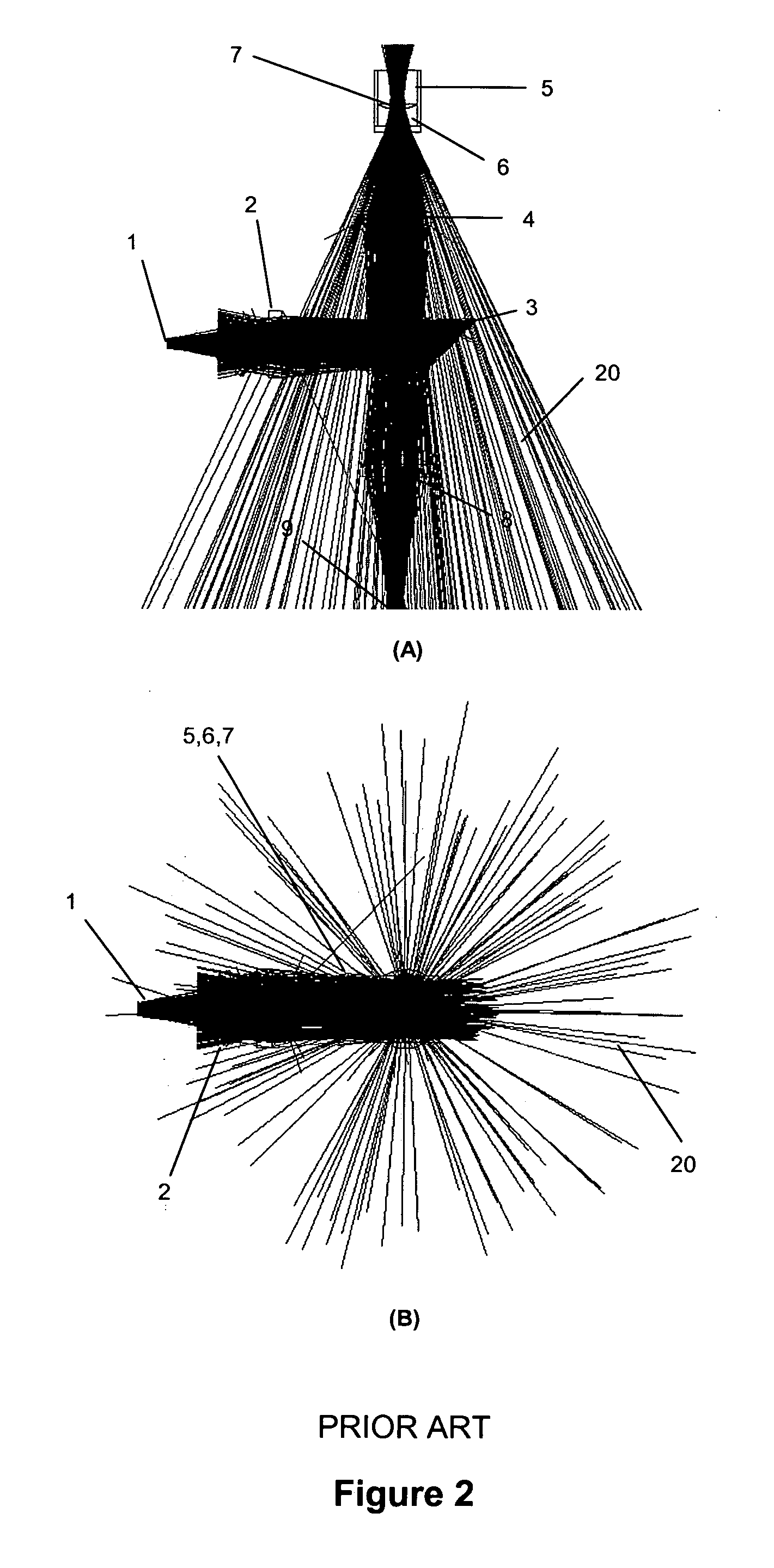Optical system
a technology of optical system and optical axis, applied in the field of optical system, can solve the problems of significant signal degradation, difficult to achieve rejection by simple baffling alone, and difficult to eliminate stray light sources, etc., to eliminate chromatic aberrations and simplify the design
- Summary
- Abstract
- Description
- Claims
- Application Information
AI Technical Summary
Benefits of technology
Problems solved by technology
Method used
Image
Examples
Embodiment Construction
[0044] Referring to FIG. 1, there is a schematic of a conventional optical system 10 for measuring fluorescence from a microplate well or any other type of liquid sample containing vessel. In FIG. 1A, an optical source 1, usually either a filtered light source or a fiber optic bundle delivering filtered light, is collimated by lens 2 and reflected to the microplate well 5 by beamsplitter 3. A second lens 4 focuses the excitation light onto the microplate well, where it is focused into the fluorescent sample liquid 6 with meniscus 7. In FIG. 1B, the emitted light from the sample 15 is collimated by lens 4, propagates through beamsplitter 3 and is focused with lens 8 to a focal point 9. If no emission filter is used between beamsplitter 3 and lens 8, then focus 9 is usually coincident with the aperture of a fiber bundle that delivers the emitted light to a remote filtering and detection location. Otherwise, a detector is placed at the focus 9 and the optical power of the emitted light...
PUM
| Property | Measurement | Unit |
|---|---|---|
| size | aaaaa | aaaaa |
| core diameter | aaaaa | aaaaa |
| core diameter | aaaaa | aaaaa |
Abstract
Description
Claims
Application Information
 Login to View More
Login to View More - R&D
- Intellectual Property
- Life Sciences
- Materials
- Tech Scout
- Unparalleled Data Quality
- Higher Quality Content
- 60% Fewer Hallucinations
Browse by: Latest US Patents, China's latest patents, Technical Efficacy Thesaurus, Application Domain, Technology Topic, Popular Technical Reports.
© 2025 PatSnap. All rights reserved.Legal|Privacy policy|Modern Slavery Act Transparency Statement|Sitemap|About US| Contact US: help@patsnap.com



